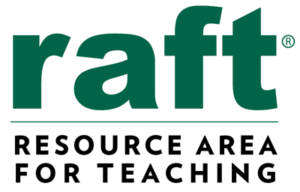Bridging the Gap
How strong can a bridge be made using a limited set of materials?
Standards
Idea Sheets are cross-referenced to subjects listed in the Common Core, Next Generation Science Standards, and California Content Standards.
Define a simple design problem reflecting a need or a want that includes specified criteria for success & constraints on materials, time, or cost. ||Next Generation Science Standards||Elementary||Engineering Design|||Generate & compare multiple possible solutions to a problem based on how well each is likely to meet the criteria & constraints of the problem. ||Next Generation Science Standards||Elementary||Engineering Design|||Plan & carry out fair tests in which variables are controlled & failure points are considered to identify aspects of a model or prototype that can be improved. ||Next Generation Science Standards||Elementary||Engineering Design|||Science and Engineering Practices: 1. Asking Questions and Defining Problems 2. Developing and Using Models 3. Planning and Carrying Out Investigations 4. Analyzing and Interpreting Data 5. Using Mathematics and Computational Thinking 6. Constructing Explanations and Designing Solutions 7. Engaging in Argument from Evidence 8. Obtaining, Evaluating, and Communicating Information ||Next Generation Science Standards||Grade 4||Science and Engineering Practices|||Support an argument that the gravitational force exerted by Earth on objects is directed down.||Next Generation Science Standards||Grade 5||Physical Science||Motion and Stability: Forces and Interactions|||Science and Engineering Practices: 1. Asking Questions and Defining Problems 2. Developing and Using Models 3. Planning and Carrying Out Investigations 4. Analyzing and Interpreting Data 5. Using Mathematics and Computational Thinking 6. Constructing Explanations and Designing Solutions 7. Engaging in Argument from Evidence 8. Obtaining, Evaluating, and Communicating Information ||Next Generation Science Standards||Grade 5||Science and Engineering Practices|||Evaluate competing design solutions using a systematic process to determine how well they meet the criteria and constraints of the problem.||Next Generation Science Standards||Middle School||Engineering Design|||Develop a model to generate data for iterative testing and modification of a proposed object, tool, or process such that an optimal design can be achieved.||Next Generation Science Standards||Middle School||Engineering Design|||Plan an investigation to provide evidence that the change in an object’s motion depends on the sum of the forces on the object & the mass of the object.||Next Generation Science Standards||Middle School||Physical Science||Motion and Stability: Forces and Interactions |||Science and Engineering Practices: 1. Asking Questions and Defining Problems 2. Developing and Using Models 3. Planning and Carrying Out Investigations 4. Analyzing and Interpreting Data 5. Using Mathematics and Computational Thinking 6. Constructing Explanations and Designing Solutions 7. Engaging in Argument from Evidence 8. Obtaining, Evaluating, and Communicating Information ||Next Generation Science Standards||Middle School||Science and Engineering Practices|||Analyze data to support the claim that Newton’s second law of motion describes the mathematical relationship among the net force on a macroscopic object, its mass, & its acceleration. [Objects subject to a net unbalanced force, e.g., an object falling , rolling down a ramp, or a moving- pulled by a constant force.]||Next Generation Science Standards||High School||Physical Science||Motion and Stability: Forces and Interactions|||Science and Engineering Practices: 1. Asking Questions and Defining Problems 2. Developing and Using Models 3. Planning and Carrying Out Investigations 4. Analyzing and Interpreting Data 5. Using Mathematics and Computational Thinking 6. Constructing Explanations and Designing Solutions 7. Engaging in Argument from Evidence 8. Obtaining, Evaluating, and Communicating Information ||Next Generation Science Standards||High School||Science and Engineering Practices
2. Unbalanced forces cause changes in velocity.||CA Science||Grade 8||01. Physical Sciences||2. Forces|||1.b. When forces are balanced no acceleration occurs, and thus an object continues to move at a constant speed or stays at rest (Newton’s First Law).||Grade 9-12||01. Physics||1. Motion and Forces||1. Newton’s laws predict the motion of most objects.
- Physical Science
- Grades 3-5
- Grades 6-8
- Science
- Engineering
